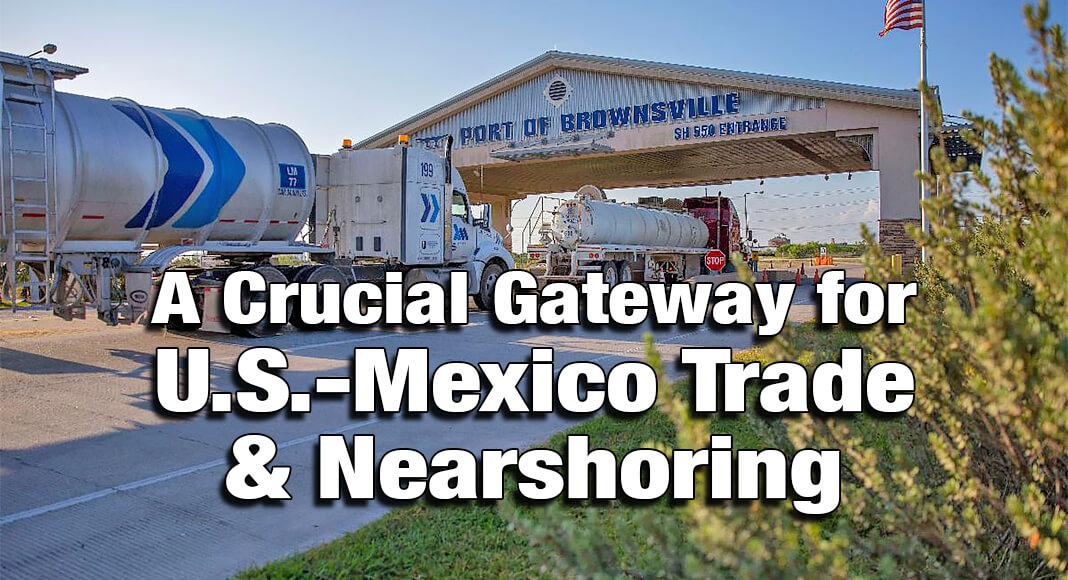
Texas Border Business
The Port of Brownsville serves as a vital multimodal logistics hub for cross-border trade, leveraging its strategic location as the only deepwater seaport on the U.S./Mexico border. It is a prominent shipper of steel, refined petroleum products, grain, aggregates, among other products supporting diverse industries located in 12 Mexican states.
The proximity to key markets allows the port to efficiently deliver goods and commodities to multinational manufacturing centers on both sides of the border, solidifying its role as a critical transshipment gateway. This helps the port stand out as the ideal location for nearshoring ventures, enabling companies to bring their manufacturing and logistics operations and close gaps in the supply chain.
Unmatched logistics including direct connectivity to USMCA interstate corridors, its closeness to border crossings—seven miles by truck and 13 miles by rail — make the port a preferred route for steel manufacturers. This logistical advantage has catapulted the Port of Brownsville as the major gateway for steel into Mexico, moving a record 5.5 million tons of steel commodities in 2023.
The rise in steel throughput is connected to the development and expansion of Ternium’s industrial center located in Pesquería, right outside the Monterrey metropolitan area. The company is utilizing the Port of Brownsville for receiving, staging, and shipping all the steel slab processed at its plant, one of the most modern industrial complexes in the world that supports the automotive, construction and white appliances industries in Mexico. Port stevedore Gulf Stream Marine, the Brownsville Rio Grande International Railway (BRG), OmniTRAX, and CPKC work in tandem to expedite steel slab shipments via rail from the port to Ternium’s mill in Pesquería. Ternium is also constructing a marine terminal at the Port of Brownsville that will support its state-of-the-art facility in Mexico.
The port is a major transshipment hub for liquid products such as premium gasoline, diesel, jet fuels, and lubricants, which are then distributed to South Texas and Mexico. As demand for refined products continues to grow, the port’s capacity to handle large volumes offers customers valuable access to Mexico’s interior—a crucial advantage in a competitive market. In 2023, over 2.5 million tons of liquid commodities were exported to Mexico via pipeline from the port’s terminals. Additionally, storage tank farms for refined petroleum at the Port of Brownsville are expanding, with a current capacity of 8 million barrels and more under construction.
The Port of Brownsville holds the distinction of establishing Texas’ first overweight corridor. Trucks crossing the border via the designated route to or from the port can carry loads up to Mexico’s legal weight limit of 125,000 pounds—45,000 pounds more than the U.S. domestic limit. This capability results in significant savings in time, money, and logistical efficiency.













